airSlate looked into how individuals and US businesses are using eSignature during COVID-19

The ESIGN Act (2000) and UETA (1999) defined the legal standing of eSignature long before COVID-19. However, it was only during the pandemic when businesses and households truly realized the convenience and value that eSignature brings. In 2020, the surge in global eCommerce transactions and transition to remote/hybrid workplaces accelerated the deployment of eSignature across different industries and even made it something normal for personal, at-home use.
In other airSlate surveys, we focused on various aspects of how businesses pivoted during the pandemic using specific digital technologies. You can learn more about how digital adoption helped US businesses pivot through COVID-19. Before that, airSlate also looked into how consumers prioritized cloud collaboration amidst remote work. We continue to explore the impact of COVID-19 by providing insights into the pandemic survival of SMBs.
As the world is slowly recovering from the pandemic, it’s crucial to understand how individuals and US businesses are using eSignature and what obstacles still prevent them from doing so. Our team at airSlate recently surveyed 1,000 US business owners and individuals, aged 18 – 65+ on their eSignature usage preferences and document storage practices during COVID-19. In this post, we’ll highlight our key findings in the survey by Dynata.
Study results
The survey was meant to answer one question – has the COVID-19 pandemic really facilitated the use of eSignature across US businesses and households? Before the pandemic, many were already using eSignature in their day-to-day operations.
With the emergence of COVID-19, the number of eSignature adopters among businesses has increased by 50%, while everyday households have added an additional 13% of adopters. Speaking on post-covid recovery, the majority will continue choosing eSignature over in-person signing.
Result:
Before the pandemic, 64% of businesses and 31% of individuals used eSignature at least once a month or more.
The gathered data suggests that almost a half of the surveyed businesses have concerns when it comes to eSignature’s security and privacy. However, this isn’t the case when it comes to personal use. Little over one-third of respondents (34%) admitted to having security/privacy concerns. However, a staggering 37% of individuals have never had the chance to try eSignature.
Overall, the dynamics of using eSignature is positive across all age groups — 69% of respondents aged between 18 to 65+ will continue to sign documents electronically, even after COVID-19 and all lockdowns are over.
Did you use eSignature before COVID-19?
According to Forrester research, 74% of organizations in document-heavy industries like financial services, higher education, and government were using eSignature to some degree pre-pandemic. The emergence of COVID-19 forced 58% of business leaders to accelerate the adoption of eSignature in their organizations and reinforce their digital capabilities for serving a broader spectrum of clients.
Our data shows that eSignature was used by 70% of businesses and 58% of homes before COVID-19. Interestingly, the data shows that businesses started using eSignature more frequently before the pandemic. 64% of business owners signed documents electronically at least once a month or more, while 36% of their peers resorted to electronic signing only a few times per year.
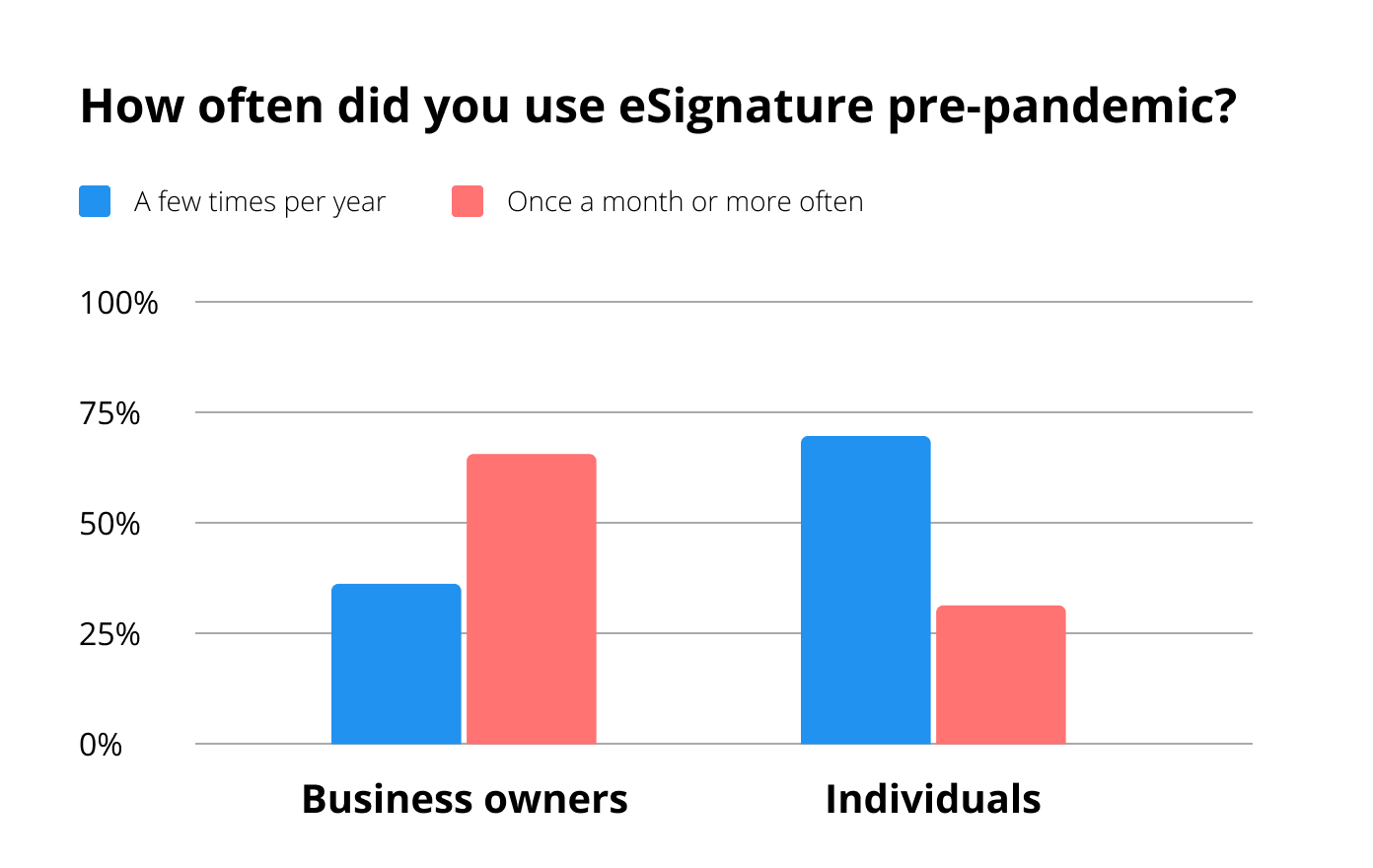
On the other hand, only 31% of personal-use respondents were frequent users of eSignature pre-covid, while 69% admitted to only having signed documents electronically a few times per year.
Do you find eSignature is easier to use than signing documents in person?
Result: as a whole, the majority believe eSignature is easier to use compared to signing documents in person.
In COVID-19 realities, any personal interactions pose potential health risks. In 2020, organizations put at least 21% of their customers at risk by failing to provide them with a possibility to process and sign documents electronically. However, with the adoption of eSignature and digital workflows, 47% of organizations have reportedly GAINED new customers during the pandemic.
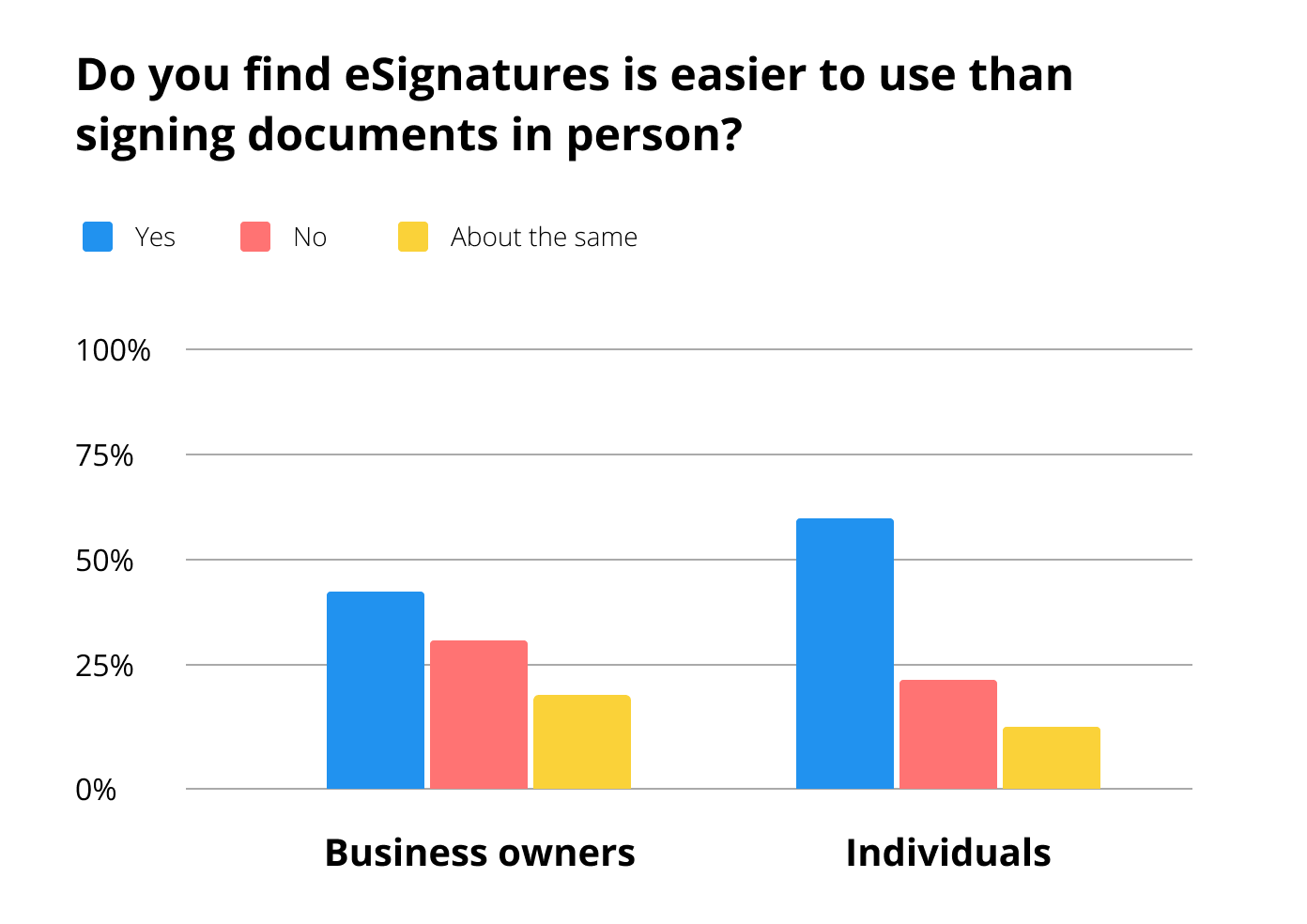
eSignature solutions are safe and easy to use because they don’t require a physical presence to sign documents; not to mention that they can be created and applied from any device. Our survey suggests that 44% of businesses and 60% of households believe eSignature is much easier to use compared to in-person signing. Surprisingly, a share of respondents among business owners (22%) and individuals (15%) still don’t see much difference between eSignature and signing documents in person.
eSignature vs. signing in person: which one will you prefer once COVID-19 is over?
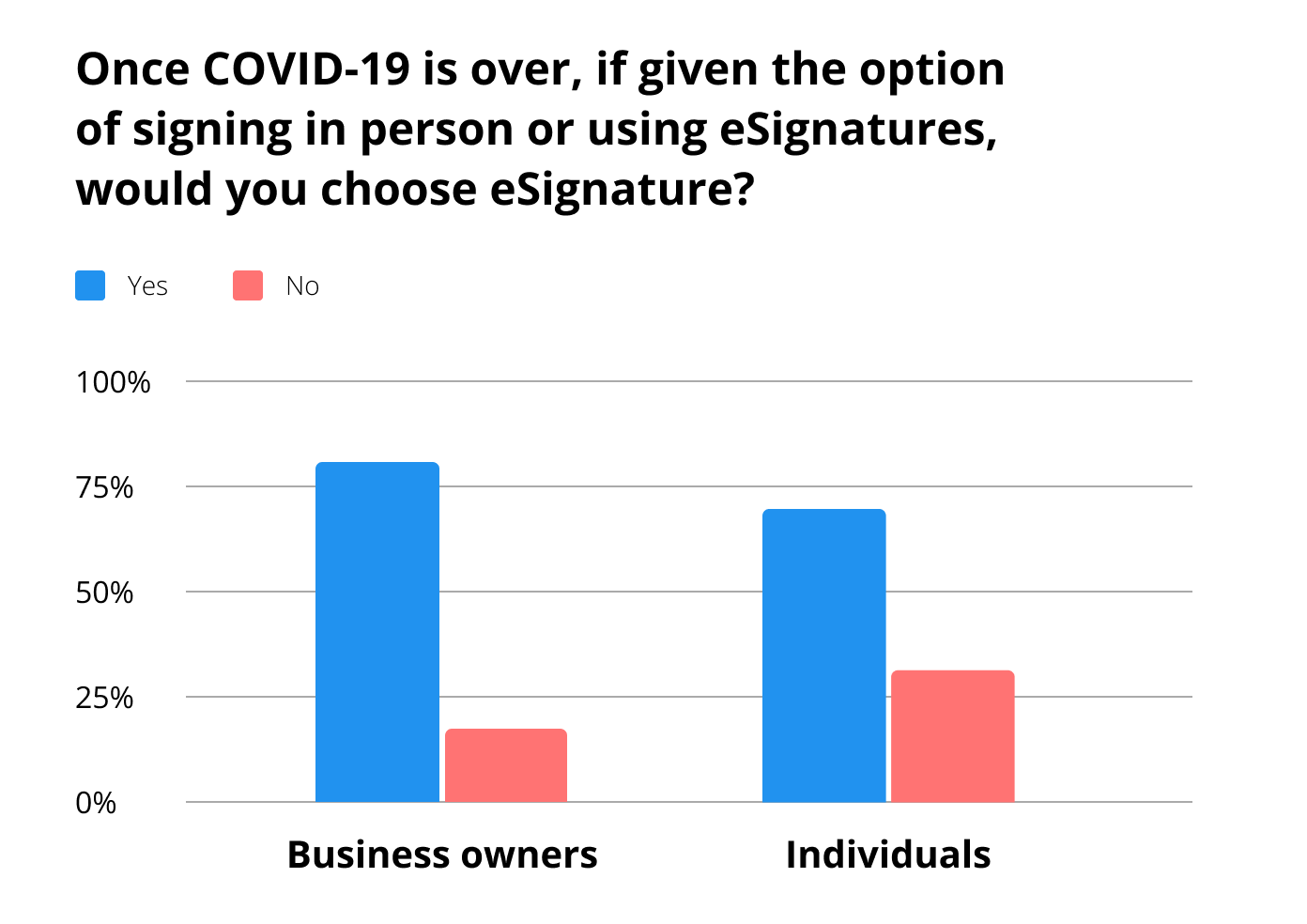
81% of business owners and 71% of individuals will choose eSignature over signing in person even after things go back to the way they were prior to the lockdowns.
What are your reasons for not selecting eSignature as an option?
Most present-day eSignature solutions maintain industry-leading compliance with popular regulations and security standards, such as HIPAA, FERPA, etc. Documents signed with eSignature are legally binding by the ESIGN Act and eIDAS regulations, which makes them legally valid and acceptable worldwide.
Nevertheless, when asked about the reasons for not choosing eSignature as an option, 48% of businesses listed security/privacy concerns. Individuals showed eSignature more trust with only 34% of respondents listing security concerns as a reason.
This comes as no surprise, since the majority of households (37%) have never had an option of using eSignature. In comparison, the percentage of businesses that listed the same reason is significantly lower — only 15%.
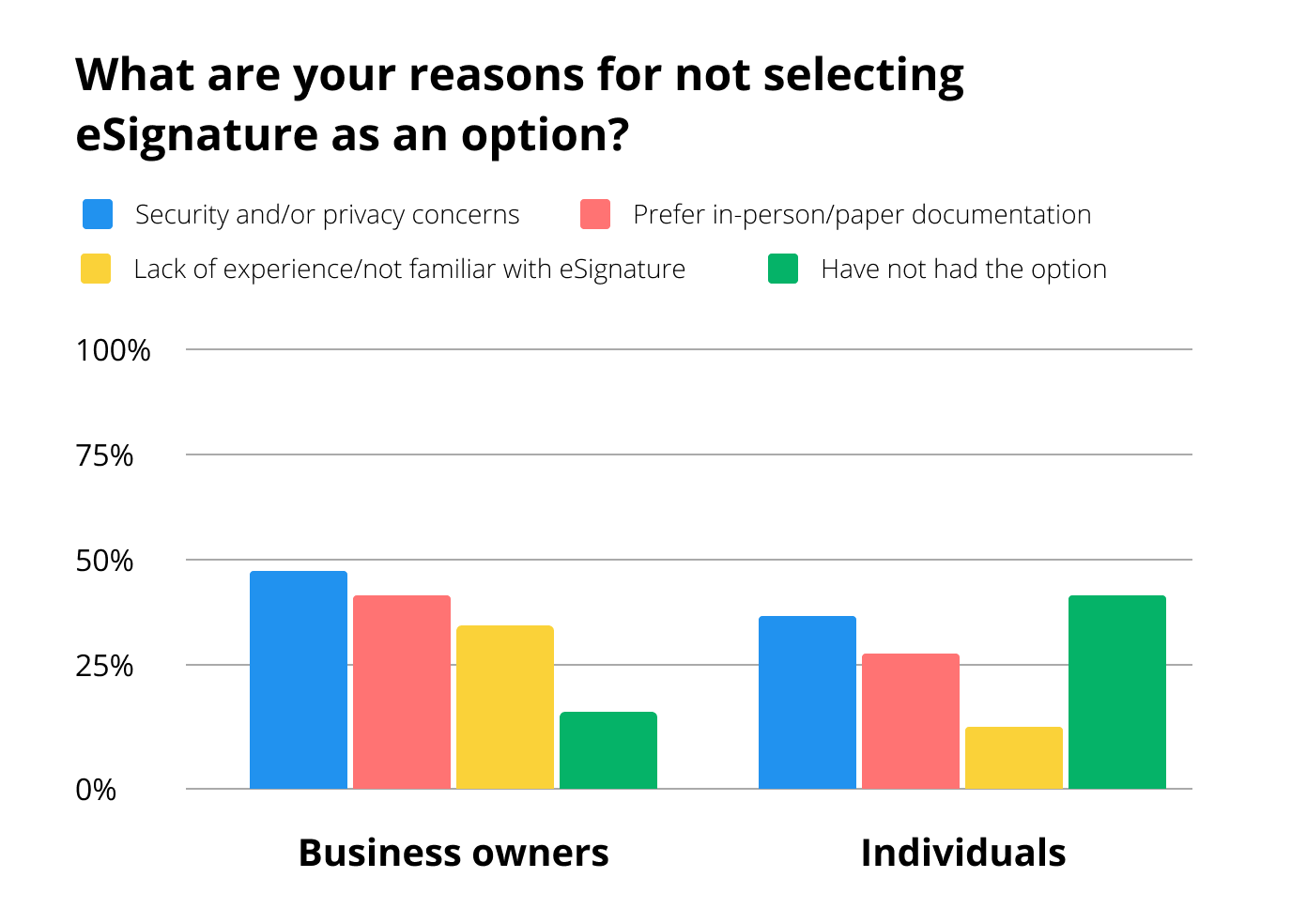
As for other reasons, heavy reliance on physical paperwork and/or in-person signing still prevents 44% of businesses and 30% of homes from using eSignature. Meanwhile, 33% of business owners and 14% of individuals are unfamiliar with eSignature technology.
Where do you store important documents?
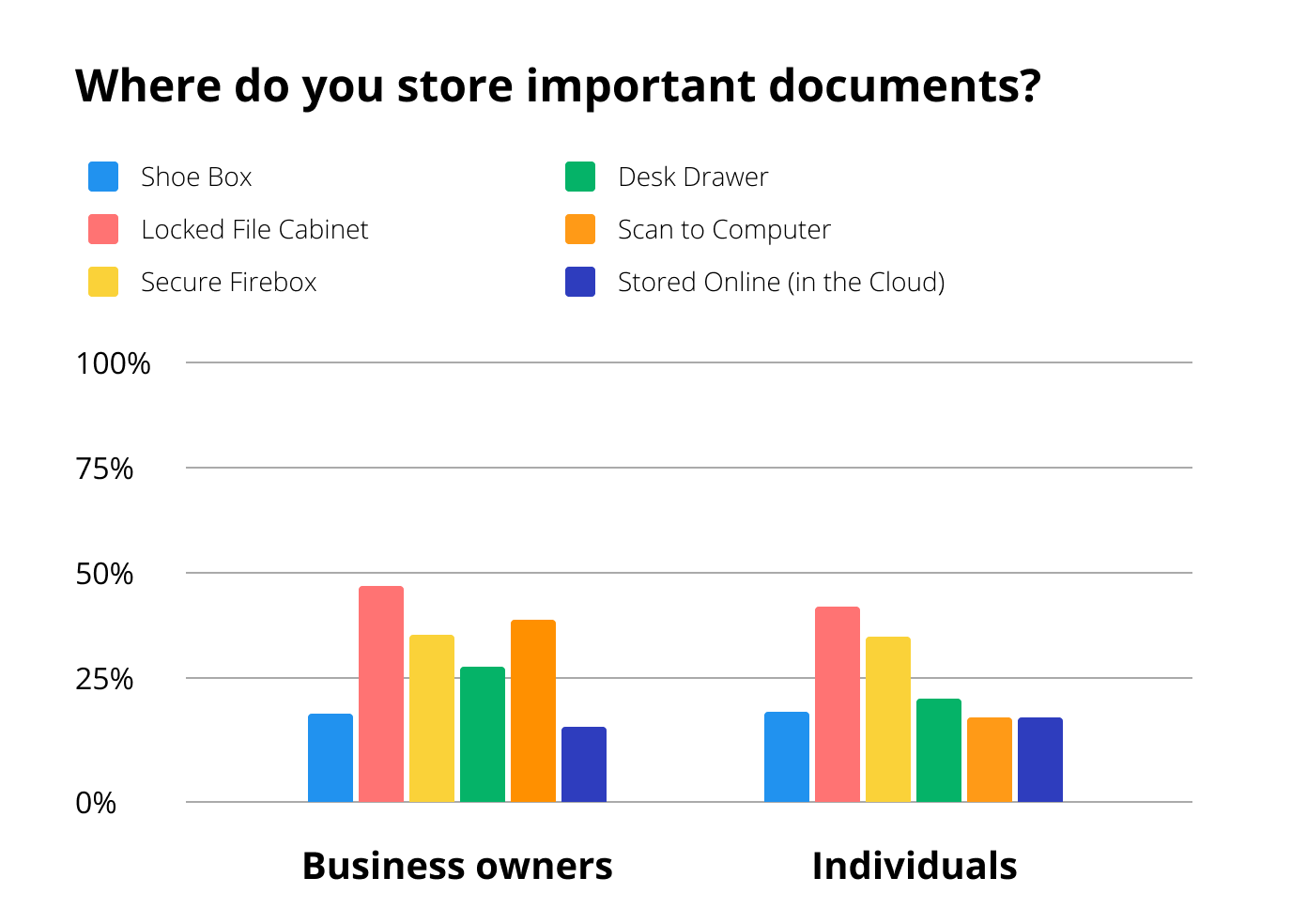
Speaking of document storage practices, only 15% of businesses and 12% of households keep their documents in the cloud. ‘Locked File Cabinet’ was the most popular storage option among business owners (48%) and households (33%). ‘Scan to computer’ was the second-most preferred storage option by 33% of businesses, while 29% of households chose in favor of a ‘Secure Firebox’.
What are the barriers to storing documents online?
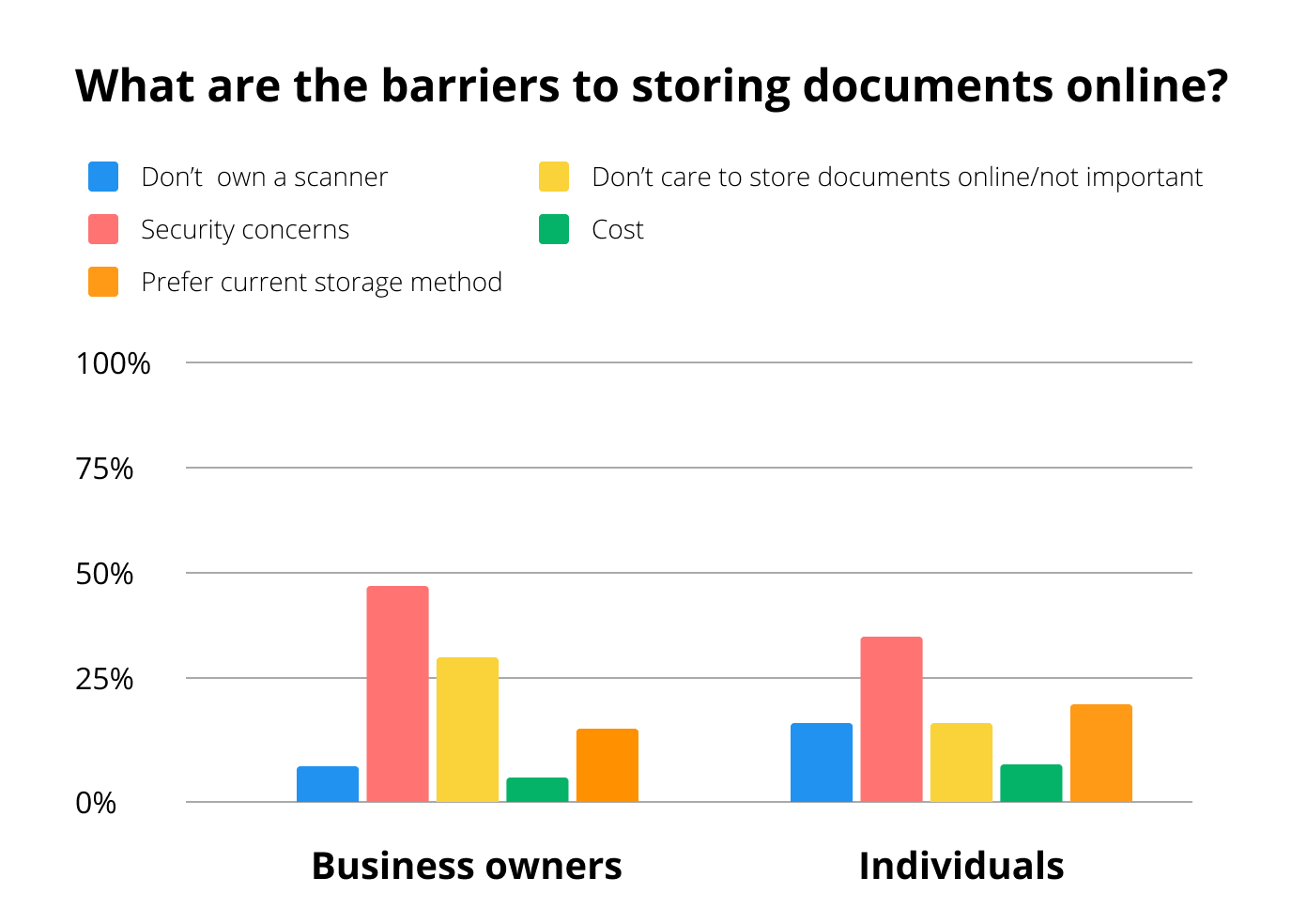
When asked about the barriers associated with storing documents online, the majority of business owners (41%) and households (34%) listed security concerns. On top of that, a little less than one-third of businesses (30%) think storing documents online is better or important. A share of respondents among households (19%) and businesses (7%) don’t have a scanner or access to a scanner. Finally, 15% of business owners and 19% of individuals prefer their current storage method.
At work, do you save documents to your desktop?
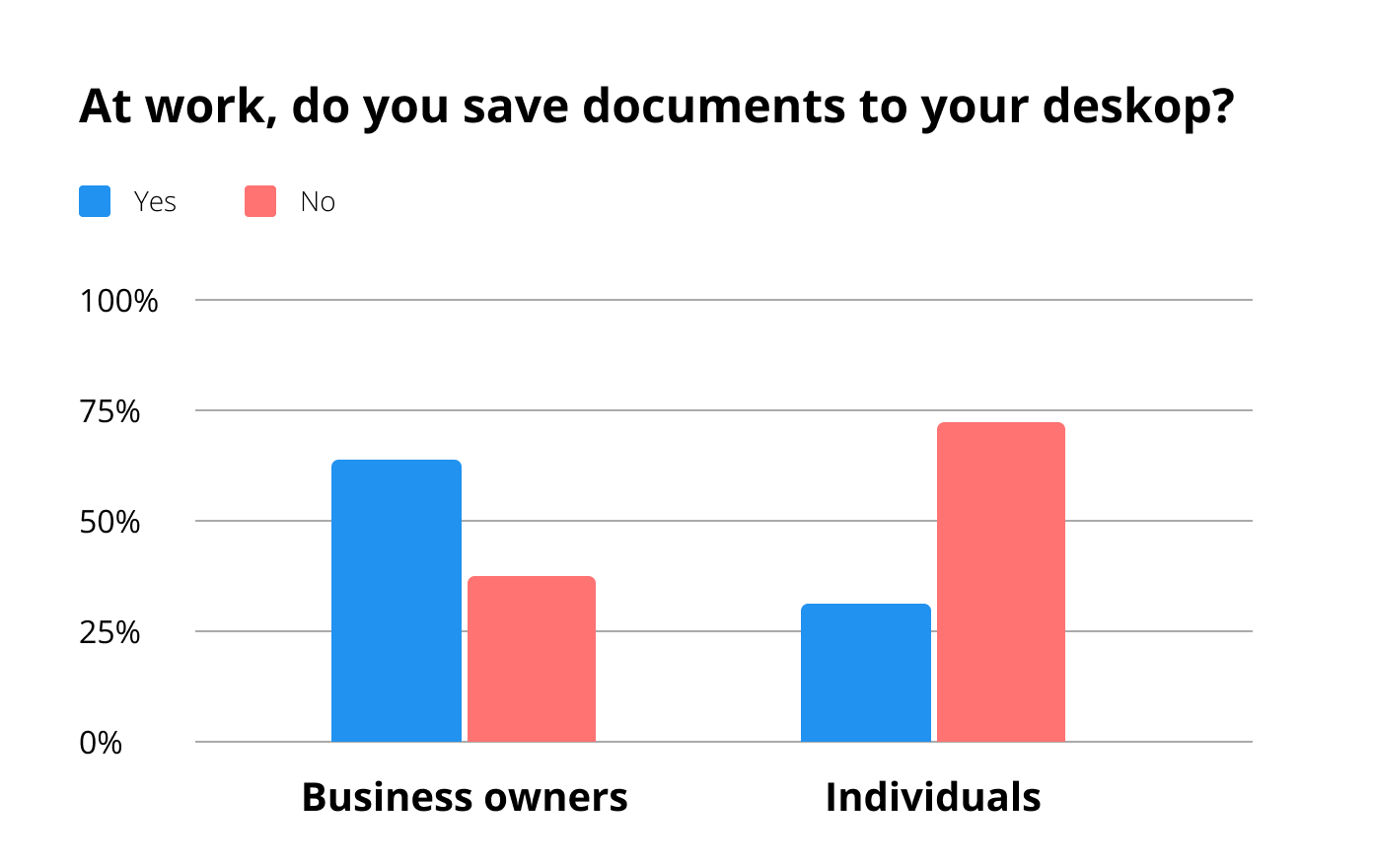
Despite security concerns, 63% of business owners prefer keeping documents on their desktops at work, while only 30% of Individuals considered this to be the preferred option.
During COVID-19, where do you store documents for work?
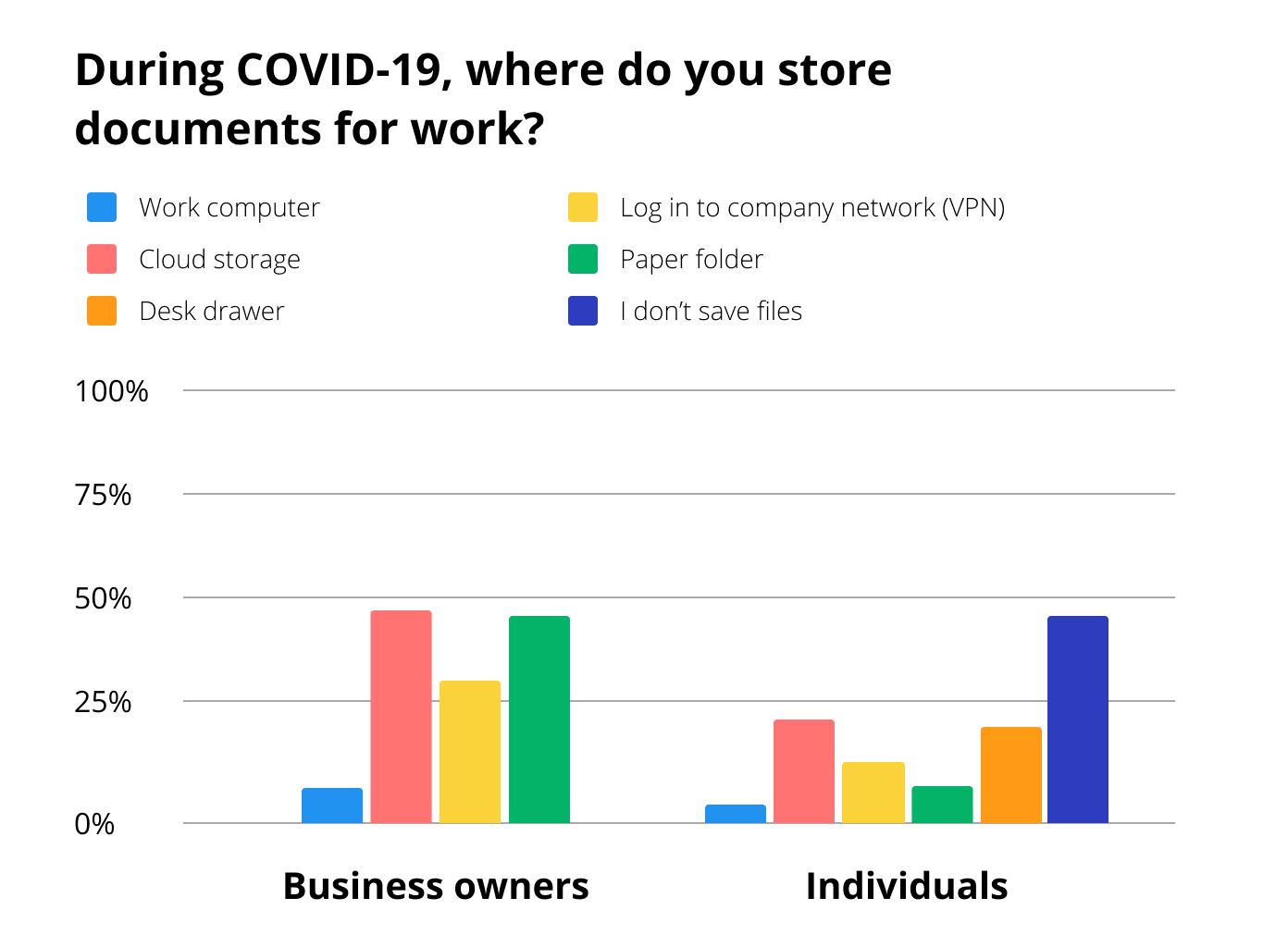
When it comes to document retention practices during COVID-19, it’s evident that business owners still prefer less secure storage options — only 37% of respondents store documents in the cloud. An equal share of businesses (37%) keep documents stored physically in folders. However, examining personal users of eSignature, 47% of respondents didn’t store files at all. Only 19% of them chose the cloud as their preferred document storage method.
In conclusion
The emergence of COVID-19 has forced businesses and households to use eSignature more. However, transition to eSignature is a work in progress, as a large share of respondents continue signing documents in person. According to our data, the majority of respondents believe eSignature is much easier to use compared to in-person signing. Surprisingly, very few individuals have had the option of signing documents electronically.
Business owners have listed security/privacy concerns as the number-one obstacle that prevents them from using eSignature and storing documents in the cloud. And yet, when it comes to document retention practices, the majority of businesses prefer unsafe document storage options like paper folders or keeping files on their desktops.
A holistic platform like airSlate can alleviate the security concerns expressed by business owners and personal eSignature users. As eSignature is becoming more commonplace and investments in cloud technology are increasing, businesses and households should leverage no-code solutions like airSlate’s automated workflows for document generation, contract management, and electronic signing.
airSlate allows for a smooth and secure transition from in-person signing to eSignature. With airSlate, both business owners and individuals can share documents remotely and experience the positive effects of cloud-based collaboration while working from home.
*Data powered by Dynata (www.dynata.com), the world’s
largest first-party data and insights platform
- Study results
- Result:
- Did you use eSignature before COVID-19?
- Do you find eSignature is easier to use than signing documents in person?
- eSignature vs. signing in person: which one will you prefer once COVID-19 is over?
- What are your reasons for not selecting eSignature as an option?
- Where do you store important documents?
- What are the barriers to storing documents online?
- At work, do you save documents to your desktop?
- During COVID-19, where do you store documents for work?
- In conclusion

